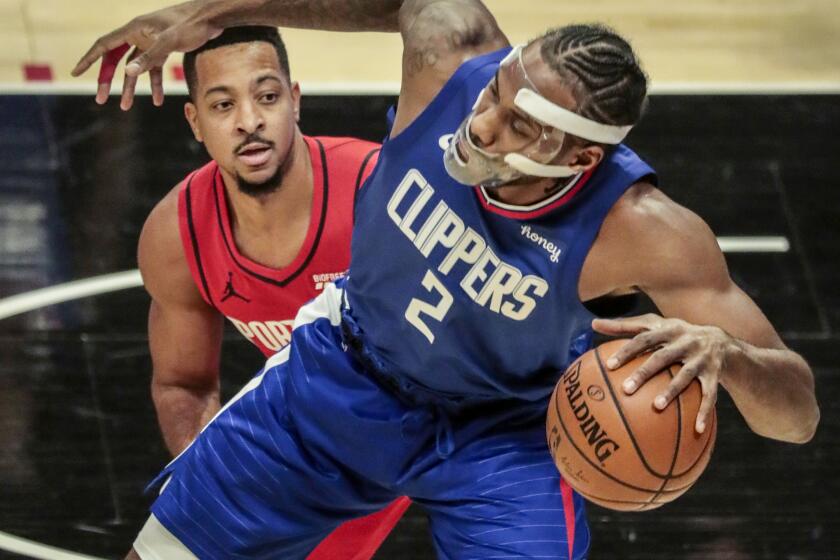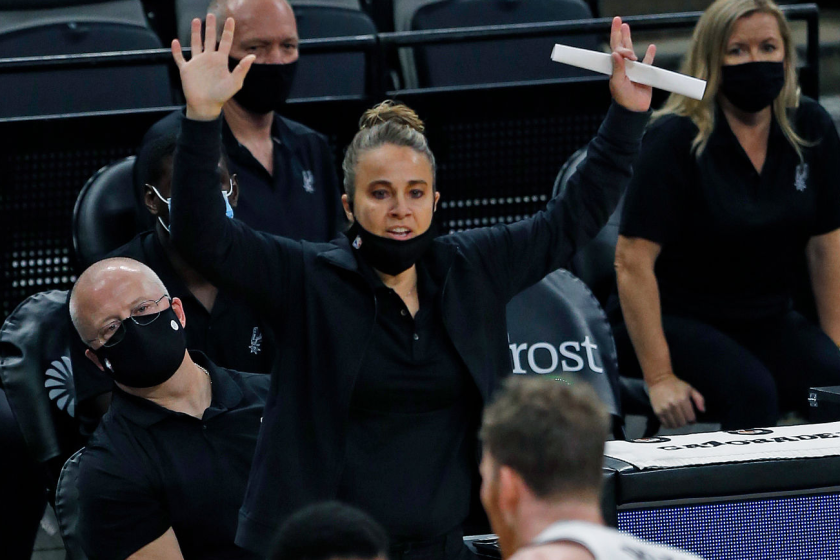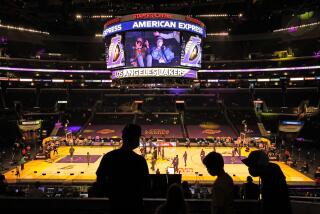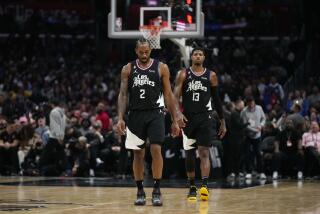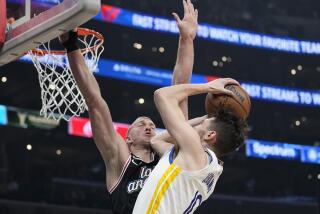Clippers hit the road, with strict NBA protocols sure to be followed
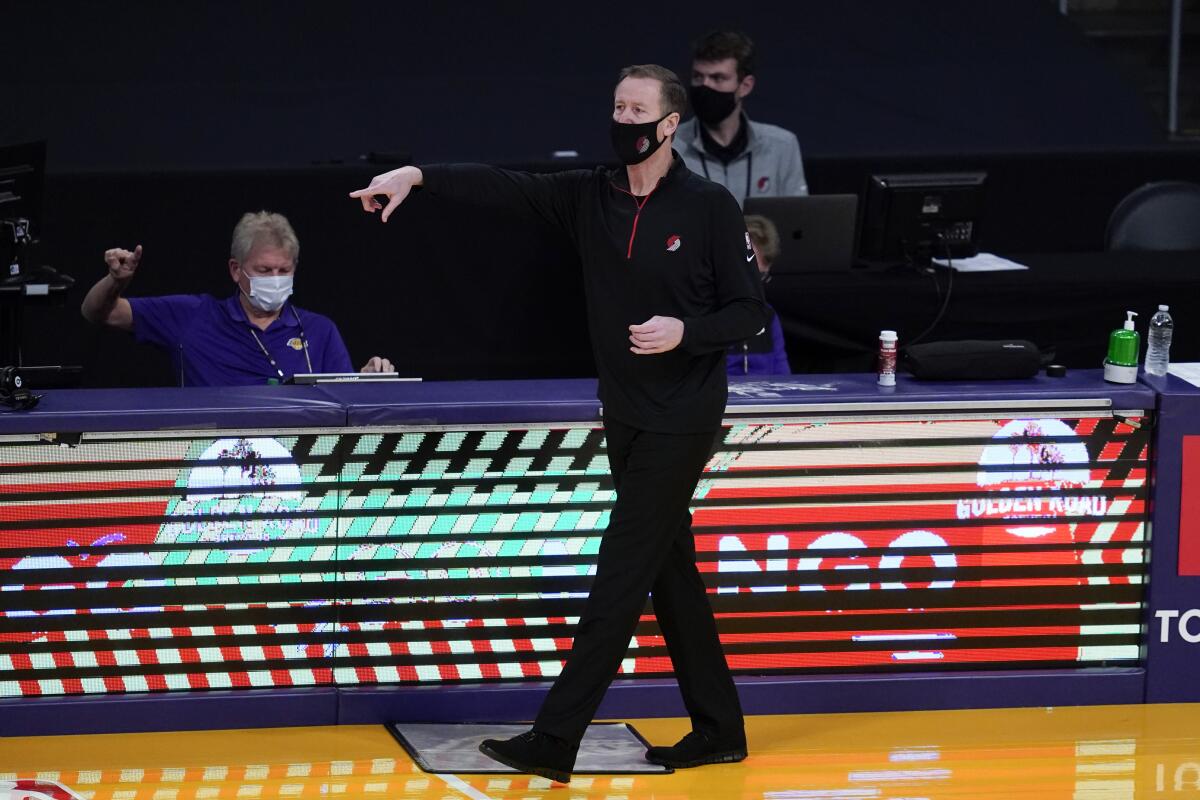
For as long as NBA road trips have existed, its markets have been ranked by the hundreds who regularly travel its 28-city circuit by any number of preferences, from nightlife and dining options to the distance between the airport and the arena.
As teams began to navigate travel amid a pandemic this season, some have been looking at the map through a different lens: Where will teams feel the most normal?
By leaving behind the single-location “bubble” where the NBA staged the final three months of last season in favor of playing in home markets, some with fans in the arenas, the league and its players union agreed to a raft of policies and protocols governing where they can go and what they can do once in another market.
Hotels must create private entrances for teams, separate from the public. Attending indoor social gatherings of 15 or more people outside of the hotel is prohibited, meaning bars, lounges and clubs are off-limits. The league will soon require sensors to be worn during all team-organized activities as part of its contact-tracing program, according to ESPN.
The rules are tight, but with leeway built in, too. Under certain provisions, travel parties can eat at league-approved restaurants. Teams can arrange for hotel space of at least 2,000 square feet to be converted into a lounge or game room. Such allowances aren’t ironclad guarantees because more stringent local rules can supersede the league’s guidelines.
“Traveling party members must comply with state and local public health ordinances or other laws or regulations applicable to professional sports teams entering another state for a game,” according to the league’s protocols.
Kawhi Leonard wore a mask that led his Los Angeles Clippers teammates to dub him ‘Leatherface’ during Wednesday’s win over the Portland Trail Blazers.
Though road trips have always differed city by city, the discrepancies in local and state health regulations have added a new wrinkle.
Traveling to at least 41 games a year for 28 NBA seasons has made the road feel like home for Terry Stotts, the Portland Trail Blazers coach whose familiarity visiting everywhere from Toronto to Texas is built around two things: where experience tells him he can find a good walk and a good restaurant.
He couldn’t do either during a four-day stay in Los Angeles this week.
Takeout-only dining had long ago rendered moot Stotts’ habit of watching NBA games on his off night at a local sports bar. Restrictions limiting the size of gatherings also prohibited the Trail Blazers from eating meals together inside their hotel.
It’s a stark contrast to rules that, in certain markets, will allow players, coaches and staffers to dine out with people who are not part of the team‘s traveling party, even if the practice is officially discouraged.
“L.A. County recommended that we not leave the hotel, so that’s been probably the biggest restriction,” Stotts said. “And we can’t meet as a group at the hotel.”
Where teams have groused in the past about spending too much time around one another on long road trips, teams are now searching for acceptable reasons to meet. Portland scheduled two shoot-arounds and a practice while in L.A. just to be able to spend time around one another, Stotts said.
“I know our guys are taking the pandemic seriously and taking precautions and we went through the bubble experience,” Stotts said. “So as much as it is a little disconcerting to not be able to leave [the hotel], we all understand how important it is.”
While in Denver for a Christmas matchup with the Nuggets, the Clippers could not meet in a group at their hotel, which meant that Christmas Eve dinners were ordered through the hotel’s restaurant and picked up in individually wrapped packages.
Spurs assistant Becky Hammon was prepared when she became the first woman to serve as an NBA head coach after Gregg Popovich was ejected against L.A.
League observers have stressed that the inconvenience of road-trip rules are in place for a reason, and that any sacrifices pale in comparison to the disruptions caused by COVID-19 across the country.
“Not being able to meet as a group and as a staff in the meeting rooms we usually have, that was different,” Clippers coach Tyronn Lue said. “Not being able to eat lunch or breakfast after shootaround together and get our bags to go, that was different as well. But, you know, it’s not a very big — it’s not a drastic change. Just being more to yourself, I guess, than being in bigger groups. But our guys handled it well.”
One day earlier in Tampa, Fla., the temporary home of the Toronto Raptors after travel restrictions kept them from playing in Canada, looser state and local regulations allowed 3,800 fans to watch from the stands during the Raptors’ Dec. 23 opener against New Orleans.
After eight games inside empty arenas this season, the preseason included, the Clippers will play Friday in Salt Lake City in front of paying fans for the first time since March 10.
Utah sold more than 1,900 tickets for a home game last week against Minnesota.
“To have the fans there will be appreciated, it’ll be added energy toward the game, but I’m not all too concerned about it, because I believe the NBA has done everything it needs to do, protocol-wise,” said Clippers center Mfiondu Kabengele. “So I feel safe.”
Some teams have considered staying at resorts with a campus-style footprint rather than a downtown tower to allow more freedom of movement.
“Things are gonna be different, it’s gonna be weird,” Clippers center Serge Ibaka said. “I think what the NBA did is try to provide the best they can to make sure we’re safe, we play it safe.
”... We love this game, we love to play this game, so we have to do whatever it takes to be safe.”
UP NEXT
AT UTAH
When: 6 p.m. PST, Friday
On the air: TV: Prime Ticket. Radio: 570
Update: The Jazz will be playing on the second night of back-to-back games after facing Phoenix on Thursday.
More to Read
Get our high school sports newsletter
Prep Rally is devoted to the SoCal high school sports experience, bringing you scores, stories and a behind-the-scenes look at what makes prep sports so popular.
You may occasionally receive promotional content from the Los Angeles Times.

